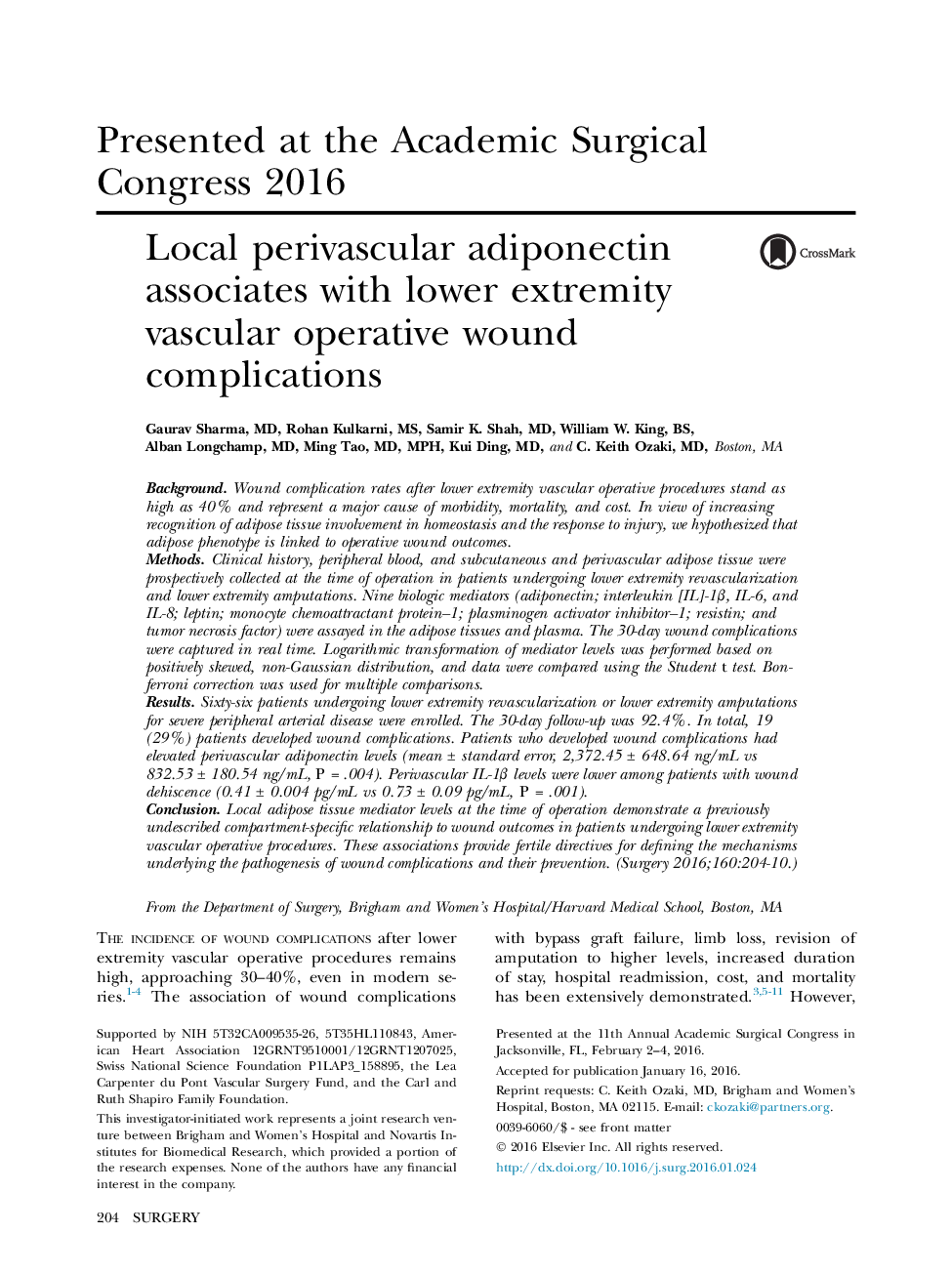| Article ID | Journal | Published Year | Pages | File Type |
|---|---|---|---|---|
| 6254803 | Surgery | 2016 | 7 Pages |
BackgroundWound complication rates after lower extremity vascular operative procedures stand as high as 40% and represent a major cause of morbidity, mortality, and cost. In view of increasing recognition of adipose tissue involvement in homeostasis and the response to injury, we hypothesized that adipose phenotype is linked to operative wound outcomes.MethodsClinical history, peripheral blood, and subcutaneous and perivascular adipose tissue were prospectively collected at the time of operation in patients undergoing lower extremity revascularization and lower extremity amputations. Nine biologic mediators (adiponectin; interleukin [IL]-1β, IL-6, and IL-8; leptin; monocyte chemoattractant protein-1; plasminogen activator inhibitor-1; resistin; and tumor necrosis factor) were assayed in the adipose tissues and plasma. The 30-day wound complications were captured in real time. Logarithmic transformation of mediator levels was performed based on positively skewed, non-Gaussian distribution, and data were compared using the Student t test. Bonferroni correction was used for multiple comparisons.ResultsSixty-six patients undergoing lower extremity revascularization or lower extremity amputations for severe peripheral arterial disease were enrolled. The 30-day follow-up was 92.4%. In total, 19 (29%) patients developed wound complications. Patients who developed wound complications had elevated perivascular adiponectin levels (mean ± standard error, 2,372.45 ± 648.64 ng/mL vs 832.53 ± 180.54 ng/mL, P = .004). Perivascular IL-1β levels were lower among patients with wound dehiscence (0.41 ± 0.004 pg/mL vs 0.73 ± 0.09 pg/mL, P = .001).ConclusionLocal adipose tissue mediator levels at the time of operation demonstrate a previously undescribed compartment-specific relationship to wound outcomes in patients undergoing lower extremity vascular operative procedures. These associations provide fertile directives for defining the mechanisms underlying the pathogenesis of wound complications and their prevention.
